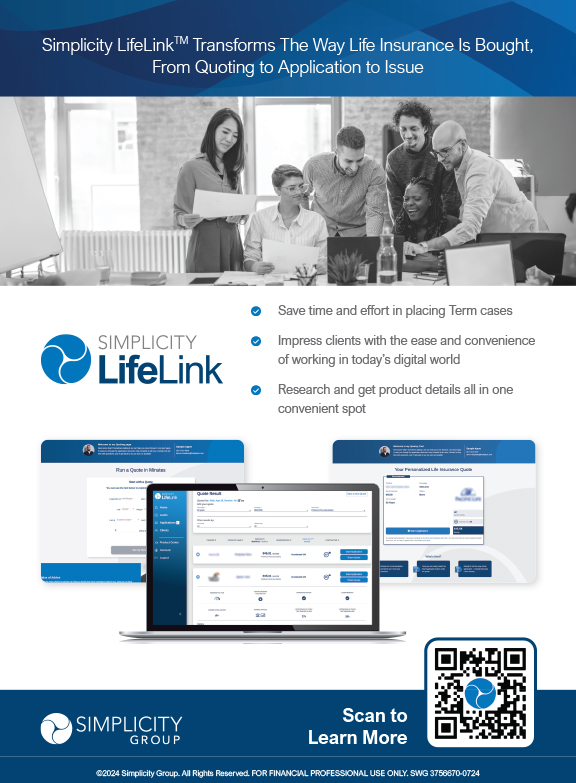Aradical departure from current practice in the LTC insurance market is necessary! Let’s begin with what we know and, for the most part, universally agree upon. Then we will logically proceed step-by-step to an inevitable conclusion.
The time is right for the National Association of Insurance Commissioners to mandate LTC insurance training for all agents who sell life and health insurance. This proposed amplification of existing guidelines should become an absolute requirement to maintain a life and health license.
NAIC meets every three years to rewrite and upgrade its Long Term Care Model and Long Term Care Regulation; and the 2012 version should include this enhanced training requirement—with no exceptions, excuses, grandfathering or circumvention of state regulation.
Let’s begin by outlining those concepts with which we strongly agree. For many years the American Council of Life Insurers has made the direct connection between financial planning and the necessity of providing LTC insurance to protect the plan.
How can any financial professional have a career designed to create assets and income at retirement without recommending LTC insurance to protect his efforts? In my humble opinion we are talking about America’s largest unprotected risk. Many trillions will be required to provide care to the boomer generation.
At this point no one in their right mind would argue that the government could or should pay for this risk (the exception being for those in the greatest financial need). It must be paid by the private sector.
The remaining question is to what extent will the private sector’s exposure be leveraged with insurance. If spreading the risk is better than having the full load fall directly on those needing care, then why can’t we make LTC insurance a mainstream sale?
I am constantly asked about leads. My answer is always the same: Just make the LTC insurance risk a centerpiece of your practice. Every conversation with every client must include an inquiry about plans for LTC—their experience with an LTC event and their financial risk if they wait to solve their LTC problems. Leads are all around you—just reach out.
LTC insurance provisions in the Pension Protection Act, which began in 2010, created the beginning of the end of non-participation in the LTC insurance crusade. Far too many agents have chosen to avoid the LTC insurance risk leveraging conversation. Yet the simple and unavoidable solution to more LTC insurance sales is more LTC insurance agents!
The proliferation of LTC insurance options is contributing to the inevitable conclusion of the problem. As we predicted, LTC insurance and chronic illness accelerated death benefit riders are being glued, bolted and combined to more and more life and annuity products.
The only way to avoid the obvious is to deny the inherent truth of the proverbial Duck Theory: If it walks like a duck and talks like a duck, it is a duck, my friend.
Both LTC insurance (IRC Section 7702B) and chronic illness accelerated death benefit riders (Section 101g) provide tax-free dollars for long term care. Both are claims eligible based on HIPAA tax-qualified definitions for the two of six activities of daily living and/or cognitive impairment. Both are defined by 90-day disability. The claims are adjudicated and paid in the same manner. The only difference is where the available funds are located. Don’t even try to tell me these are not identical duck twins—chronic illness ADB riders are long term care insurance, period.
Three states have already come to this conclusion—Florida, Kentucky and Hawaii—and require LTC insurance training regardless. More states will follow, which makes the duck theory hard to ignore—it is blatantly obvious.
Yes, we have an aging field force, and new recruits are not arriving in sufficient numbers; however, that cannot be a rationalization for inadequate preparation. I cannot accept arguments based on expediency. LTC insurance training cannot be muted or divided for convenience.
This brings us back to the principal of unavoidable contact. A number of companies provide chronic illness accelerated death benefit riders with the majority of their universal life products. These riders are provided at no current cost unless they are used—costs are then deducted from the final payout. In other words, the LTC insurance/chronic illness benefit “comes with” every one of these policies. How can anyone avoid a conversation about this? Even if the intention is to make a life insurance sale with blinders on, there is still an obligation to explain that if such a rider is used, the life insurance benefit will be diminished. If you do not wish to expose the life insurance to the LTC risk, do you not have an obligation to offer alternatives?
The basic requirements are already in place in the 2009 NAIC Model Act, which states, “An individual may not sell, solicit or negotiate long term care insurance unless the individual is licensed as an insurance producer for accident and health or sickness and has completed a one-time training course. The training required is eight hours and four hours more every two years thereafter.” This very strong recommendation, which actually began in 2003, became the armature on which to build the Partnership Program training.
Basic LTC training should include LTC insurance and LTC services; state-specific Partnership information, where applicable; available LTC services and providers; changes and improvements; as well as alternatives to LTC insurance. Also, training is to include consumer suitability requirements (i.e., suitability is not just affordability; it is, more importantly, whether the sale fits the need).
The 2009 Model Regulation Section 24 spells out suitability: “The applicant’s goals or needs with respect to long term care and the advantages and disadvantages of insurance to meet the goals or needs and the values, benefits and costs of the applicant’s existing insurance, if any, when compared to the values, benefits and costs of the recommended purchase or replacement.”
What this suggests is that every agent has a fiduciary responsibility to explain all “the good and the bad” of all the choices. However, the change that will finally transform the long term care insurance industry is to remove one word from the first sentence of section 24(A): “This section shall not apply to life insurance policies that accelerate benefits for long term care.”
This action would be a resounding affirmation of our belief in the necessity of LTC insurance as well as the acceptance of structural benefit reality and would unleash the forces of professional obligation and moral necessity.
Remove, expunge and completely obliterate the word “no” and the phoenix will rise from the ashes!
Other than that I have no opinion on the subject!


























